The list of the 7 Most Endangered monuments and heritage sites in Europe for 2023 – which marks the 10th anniversary of this innovative programme – was announced by Europa Nostra, the European Voice of Civil Society Committed to Cultural and Natural Heritage, and the European Investment Bank Institute
The selection was made on the basis of the outstanding heritage significance and cultural value of each of the sites, as well as the serious danger that they are facing today. The level of engagement of local communities and the commitment of public and private stakeholders to saving these sites were considered crucial added values. Another selection criterion was the potential of these sites to act as a catalyst for sustainable socio-economic development as well as a tool for promoting peace and dialogue within their localities and wider regions.
KORTRIJK RAILWAY STATION,
Kortrijk, BELGIUM
Built in 1839, following the European trend of Neoclassicism, the first railway station in Kortrijk was heavily bombed in 1944. The station was rebuilt in 1951 to a new design by the architect Pierre Albert Pauwels, one of the most important figures in Belgian contemporary architecture. The rebuilding of the station followed the Expo 58 style, a “discussion” between neoclassical and contemporary elements.
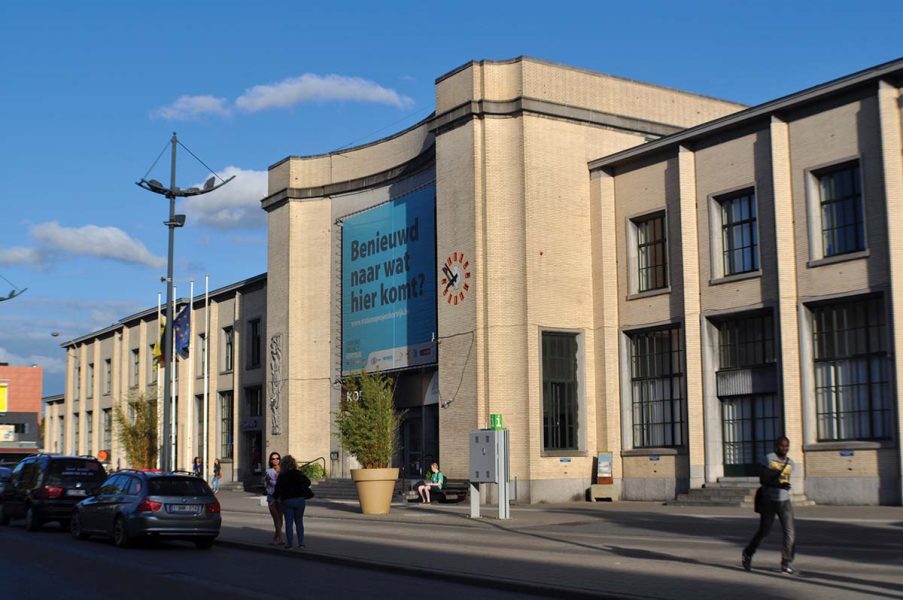
The iconic building is now threatened to be demolished to make space for the development of a new station. The local community has been campaigning against the demolition and for the sustainable conservation and development of this architectural landmark. The Advisory Panel of the 7 Most Endangered Programme stated: “The Kortrijk Railway Station is a unique architectural piece and a well-preserved example of Belgian railway heritage. The recent reconstructions of other Belgian railway stations demonstrate that saving the existing architecture combined with modern additions and functions, go perfectly well together.” The nomination to the 7 Most Endangered Programme 2023 was made by the Flemish Association for Industrial Archaeology, with the endorsement of Europa Nostra Belgium.
PARTISAN MEMORIAL CEMETERY,
Mostar, BOSNIA-HERZEGOVINA
Designed by the famous Yugoslav architect Bogdan Bogdanović, the Partisan Memorial Cemetery is one of the largest anti-fascist monuments in the Balkans. Built in 1965 in the town of Mostar, it features some 700 tombstones as grave markers of freedom fighters from the Yugoslav Partisan movement.
The Partisan Memorial Cemetery has become one of the region’s contested heritage sites. This has resulted in repeated acts of vandalism up until June of 2022, which received widespread condemnation. This exceptional memorial site urgently needs a holistic plan for its conservation and maintenance with a corresponding funding.
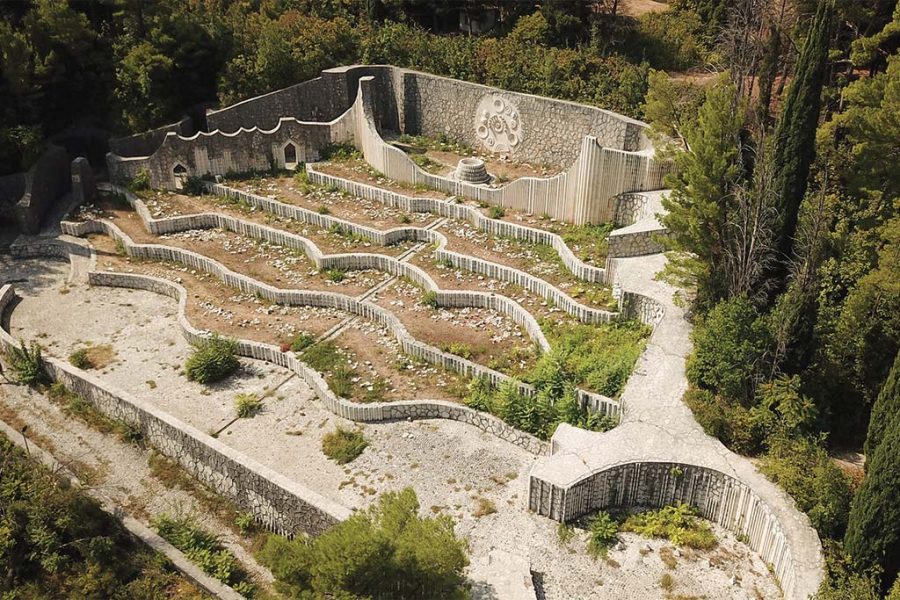
The Advisory Panel of the 7 Most Endangered Programme commented: “(…) The Partisan Memorial Cemetery in Mostar is an outstanding example of the high-quality commemorative culture rooted in anti-fascist ideals within SFR Yugoslavia. At the time when Europe seeks to assert and put a much stronger emphasis on the vital importance of the shared values which form the very basis of the entire European project, this significant place of memory located in the Western Balkans should be restored with the support of local, national and European funds, and protected for present and future generations.” The nomination to the 7 Most Endangered Programme 2023 was made by IDEAA Mostar with the endorsement of the Mayor of Mostar, the Galerija DESSA and Europa Nostra Serbia.
TCHAKVINJI FORTRESS,
Zugdidi, GEORGIA
Located in the city of Zugdidi, the Tchakvinji Fortress was constructed between the 2nd and 5th centuries BC and remained in use until the 18th century. Since the Hellenistic period, the fortress has been related to the silk roads. The monument was a vivid part of the history of Georgia in the region, since it also served as a shelter for the locals during the pre-revolution period of Tsarist Russia.
Abandoned for over two centuries, the Tchakvinji Fortress has suffered from deterioration and has been exposed to severe weather conditions. The academic community of Georgia has been well engaged in activities around the fortress since excavations took place there in 1968-69. The excavations showed that there was continued habitation at the site since the Late Bronze Age, reinforcing the heritage significance of the landscape.
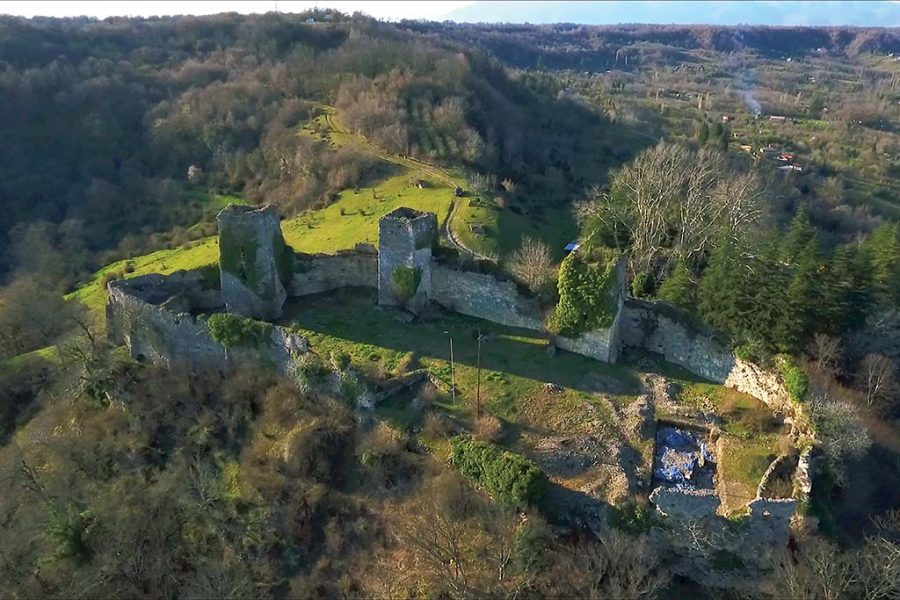
The rescue of this Monument of National Significance would act as a catalyst for sustainable socioeconomic development of the region.
The Advisory Panel of the 7 Most Endangered Programme agrees with the nominator that “the proximity to the historic city of Zugdidi and to the Black Sea Coast should be foregrounded as a source of international and local tourism”.
The nomination to the 7 Most Endangered Programme was made by the Georgian Arts and Culture Centre (GACC), Europa Nostra’s country representation in Georgia. It has the support of the City Hall of Zugdidi Municipality, owner of the site, and other local partners.
MEMENTO PARK,
Budapest, HUNGARY
The Memento Park is a history museum, artistic action ground and tourist attraction – the resting place of statues which used to symbolise communist ideology in the streets of Budapest between 1945 and 1989. During the change of the political system in 1989-90, the public in Eastern European communist regimes turned radically against reminders of that era. In Hungary, a unique political and societal compromise initiated the relocation of unwanted public propaganda statues. The design competition to relocate 41 artworks was won by the architect Ákos Eleőd. Opened in 1993, Memento Park is Europe’s first, and until today only, propaganda statue collection within a politically neutral setting.

The Advisory Panel of the 7 Most Endangered Programme highlighted: “(…) Have the monuments served their aim of reconciliation with the past? Certainly, their condition is beginning to fade with the memory. Is the curiosity of strangers sufficient? Should younger generations be reminded? Can artistic skills be objectively appraised without the associations of regime? Is the Hungarian approach to dissonant heritage a model for Europe? These are the challenges, and perhaps the opportunities, posed to Memento Park, one of 7 Most Endangered heritage sites in Europe for 2023.”
The Memento Park has been operated and maintained by a business organisation, with support of a public benefit foundation since 2007. The operators undertake general maintenance, but income is insufficient for expert conservation.
The nomination to the 7 Most Endangered Programme 2023 was made by the Monumentum Public Benefit Foundation and endorsed by ICOMOS Hungary and the Budapest History Museum.
SISTERS’ HOUSE ENSEMBLE,
former Moravian settlement in Kleinwelka, GERMANY
Built in the mid-18th century, the Sisters’ House Ensemble is located in Kleinwelka, a former Moravian settlement in Saxony, Germany. The Moravian community, founded in the early 18th century, originates from religious refugees from Moravia in today’s Czechia.
The sisters lived together and shared their religious faith. They set up an education system and ensured substantial health care for themselves and locals. The sisters were also active in the wider community of Kleinwelka and the rural area beyond.
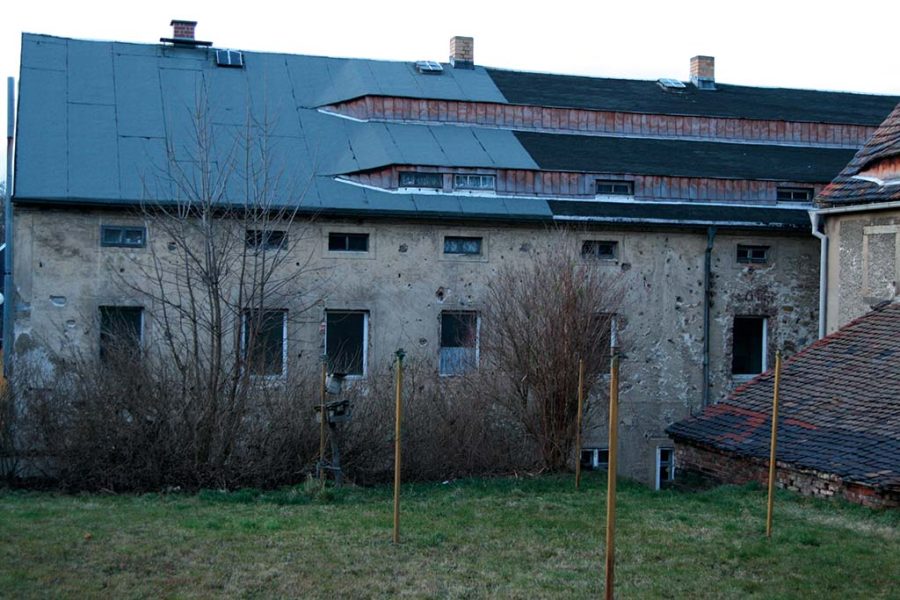
The Moravian settlement began to decline by the 20th century. Tenants started gradually moving out due to low housing standards. Since then, the abandoned ensemble of buildings has been hardly used and has fallen into decay.
The Advisory Panel of the 7 Most Endangered Programme emphasised: “(…) Once restored, the Sisters’ House Ensemble could present local history and serve a variety of social activities of local, regional and cross-border importance. A very committed support association strives to contribute to such development.”
Europa Nostra Germany nominated the site to the 7 Most Endangered Programme 2023 with the support of local and international organisations, such as the Friends of Schwesternhaus e.V., the City Council Bautzen, the State of Saxony, the Technical University Dresden and the Prussian Cultural Heritage Foundation.
WATERMILLS OF BISTRICA,
Petrovac na Mlavi, SERBIA
The Watermills of Bistrica are a unique complex of historic mills for grinding grain and rolling cloth created between the 19th century and the mid-20th century, located in the village of Bistrica in Eastern Serbia. The architecture of the watermills presents the folk characteristics of Balkan rural structures, namely small-scale and wooden constructions.
“Together with other residential, spiritual and commercial buildings of vernacular architecture, the Watermills of Bistrica form a unique rural landscape, bearing witness to the important process of food production once present throughout Europe. Even though some watermills are still in function, the whole complex of Watermills of Bistrica is degrading due to natural factors, such as floods, and also due to lack of maintenance. With proper restoration, interpretation and a sustainable cultural tourism plan, the Watermills of Bistrica could become a great example of successful heritage revitalisation bringing multiple benefits to local community and economy”, said the Advisory Panel of the 7 Most Endangered Programme.
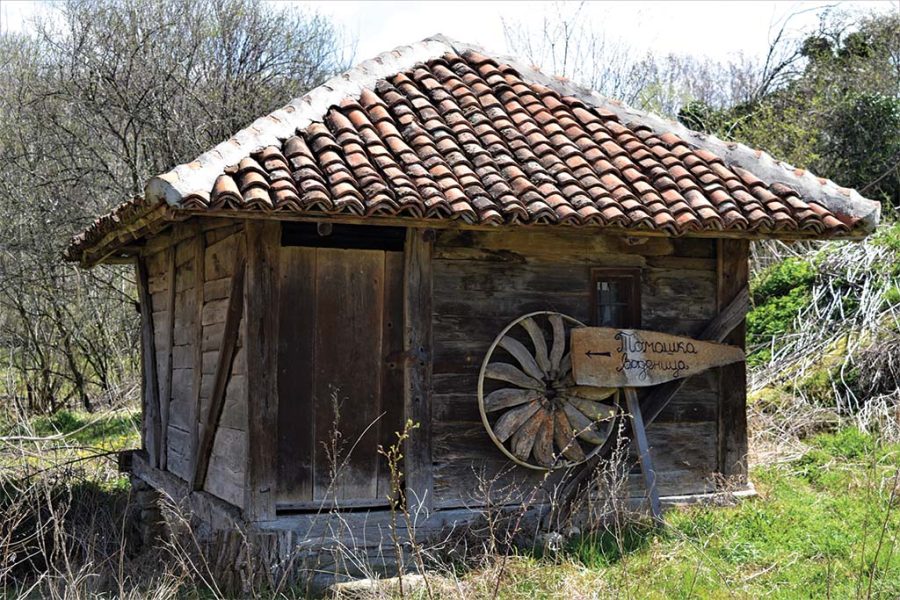
The Watermills of Bistrica were nominated to the 7 Most Endangered Programme 2023 by the local community – with the support of the local “Native Museum” and the Assembly of Millers of the Region, in collaboration with the Tourism Organisation of the Municipality of Petrovac na Mlavi – and with the endorsement of Europa Nostra Serbia.
CULTURAL LANDSCAPE OF SVETI STEFAN,
Paštrovići, MONTENEGRO
Sveti Stefan is a 15th-century fortified town, built as the cultural and administrative heart of the Paštrovići region. The 1.2-hectare islet, with its stone houses, churches, streets, lanes, squares and gardens, is connected by a low bridge to the mainland in close proximity to Miločer Park.
The main threat to the cultural landscape of the Sveti Stefan and Miločer is the uncontrolled development of tourism and real estate facilities inside the site area.
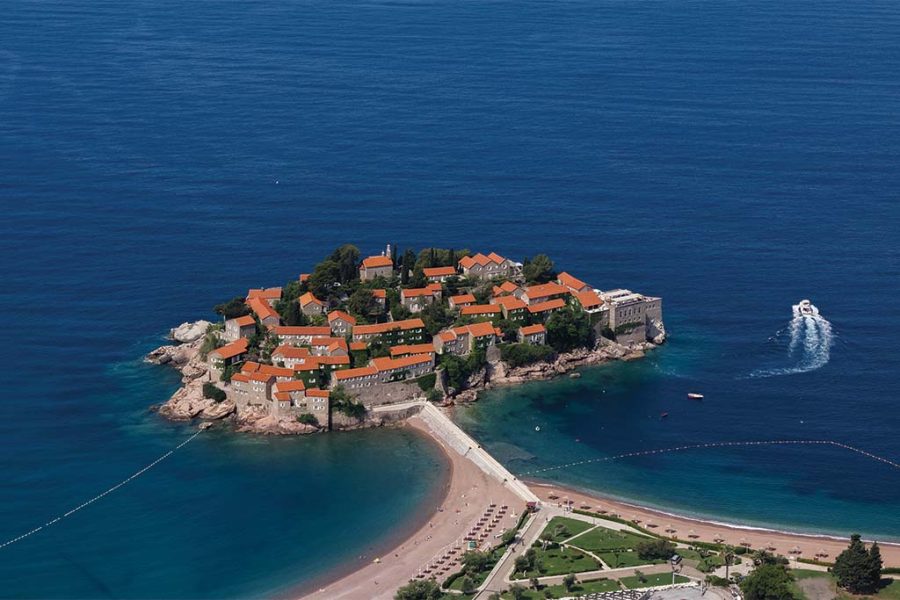
The Advisory Panel of the 7 Most Endangered Programme noted: “Despite Sveti Stefan having National Cultural Heritage Classification (…), the Montenegro State has almost half privatised this national treasure and disenfranchised its own citizens from their own public domain. Unauthorised building and site changes are altering the whole aspect of the site. The popular and public summer theatre has been closed and dismantled. Public access to Sveti Stefan old town and other parts of the site has been forbidden, even during winter months when the hotel is closed, making it impossible for locals and non-hotel guest tourists to enjoy this cultural landscape. (…)”
The nomination to the 7 Most Endangered Programme 2023 was made by the group of citizens “Initiative for Sveti Stefan”. The authorities in Montenegro are urged to limit the development of tourism and real estate facilities inside the site area. The nominator suggests the creation of a cultural centre to host a local museum and cultural activities, in combination with certain existing hotel facilities.